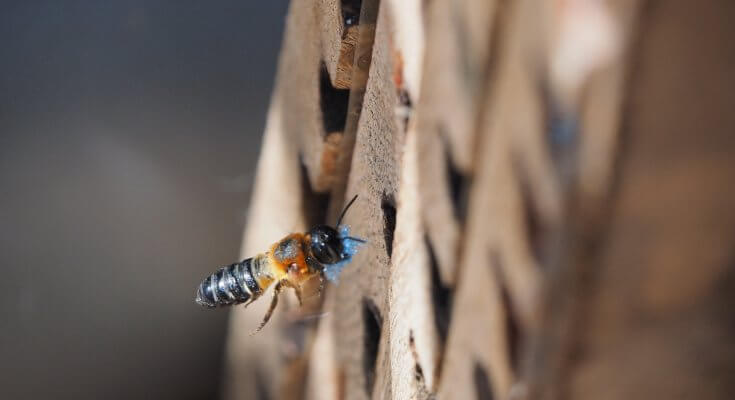Involved members of MultiTroph: Felix Fornoff, Michael Christopher Orr, Ting-Ting Xie, Alexandra-Maria Klein
Basic and Applied Ecology, Volume 76, May 2024, Pages 69-79, https://doi.org/10.1016/j.baae.2024.02.008
Summary: Fornoff et al. conducted a “home-and-away” comparison of the life history traits of the sculptured resin bee, Megachile sculpturalis, which is an invasive species in Europe and North America. The authors compiled data on nest architecture, offspring, natural enemies, body size, and phenology from its native range in Asia and its exotic ranges. The findings indicate that the bees’ phenology shifted to an earlier period in the exotic ranges compared to the native range, and while the overall abundance of natural enemies remained similar, specialist enemies were absent in the exotic regions. The study also found that body size was similar between native and exotic ranges, and that the number of brood cells per nest cavity was significantly higher in Europe than in China.
Conclusion: The comparison of life history traits between the native and exotic ranges of M. sculpturalis suggests that trait shifts may be explained by founder effects or ecological filtering. The absence of specialist enemies in the exotic ranges supports the “enemy release” hypothesis, which may contribute to the species’ reproductive success and rapid spread.
